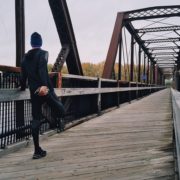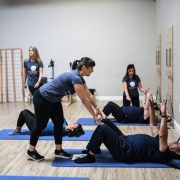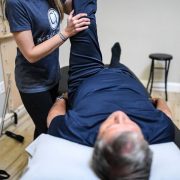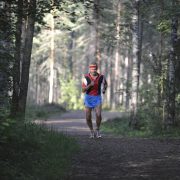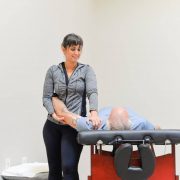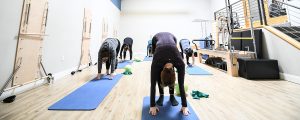6 Tips for Healthy and Mobile Knees this Summer
When you’ve got persistent, nagging knee pain, it can significantly impact your quality of life, and put a real damper on your summer. The good news is there are many things you can do naturally and on your own to help keep your knees healthy, especially with the increased activity that often comes with summer.
Here are six of my top tips to ensure your knees stay strong and pain-free during your summer adventures:
1. Strengthen Your Hips and Core
Your hips and core provide essential support and stability to your entire body, but especially your lower limbs and knees. Strengthening these important muscle groups is key for not only relieving knee pain – but preventing it as well. Weakness or imbalance in your hips and core can lead to poor alignment and compensatory stress on your knees during movements like walking, running, or squatting. So when you focus on strengthening your hips and core – you’ll improve your overall biomechanics – and reduce the wear and tear by minimizing the load placed through your knees during summer activities.
2. Get (and Stay) Mobile
One saying you’ll hear me repeat over and over is: “mobility before stability.” When you’ve got stiffness in your joints, the surrounding muscles will try to compensate. Muscles don’t work as well when the joint they are in charge of moving doesn’t have full and free mobility. I see this a lot in people suffering from knee pain.
Good and optimized joint mobility will enhance your body’s ability to move efficiently and with proper body mechanics, thus, reducing the strain on your knees. By increasing (and maintaining) your flexibility and range of motion, your body will move more freely and distribute forces more evenly throughout your joints and muscles (including your knees).
3. Don’t Sit so Much
Knee pain can come directly from your knee, but also from your spine (even when you don’t have any back pain). Interrupting your sitting throughout the day (I recommend once every 30 min) addresses both potential causes. For knees in particular, prolonged periods of sitting can cause stiffness and lead to poor blood circulation in and around your knee joint. That’s why sometimes after sitting for a while, you can experience sharp stabbing pain in your knee when you go to move.
Sitting for extended periods can also lead to tightness in the hip flexors and hamstrings, which can negatively impact knee alignment and function. When you take regular breaks to stand, stretch, and move around – you relieve knee pressure, maintain good joint mobility, and prevent muscle imbalances that (when left unaddressed) can gradually creep up and ruin your summer.
4. Keep Moving
Regular movement and exercise helps to stimulate blood flow. If you’ve got inflammation in your knees causing pain, good blood flow helps to actually reduce inflammation by delivering essential nutrients and oxygen while also removing waste products. If your knees are on the arthritic side, engaging in low-impact exercises like walking, swimming, cycling, or Pilates can help build strength and endurance around your knees without putting excessive stress on your joints.
Regular movement also helps lubricate your knee joints, which can reduce friction and discomfort during summer activities. Perhaps the biggest benefit of regular exercise and movement is the release of endorphins, which are your body’s natural painkillers that can help alleviate discomfort in any joint, not just your knees.
5. Wear Sensible Footwear
The right (or wrong) footwear can greatly impact how your knees feel when walking, running, or standing. Proper footwear provides the necessary support and cushioning to reduce knee strain. And depending on the mechanics of your feet and ankles, the right footwear can help improve overall alignment and stability.
In the summer, people love wearing sandals and flip flops. However, if you’re prone to knee problems, you may want to reconsider this choice or only wear them for short periods when you won’t be standing or walking for long. Flip flops, in particular, offer little support and can exacerbate knee pain. By choosing shoes that prioritize comfort, support, and proper alignment, you can effectively reduce knee pain and enhance overall joint health for a happy and active summer.
6. Work on Your Balance
Good balance is crucial for stability, control during movement, and reducing fall risk, especially in summer activities like paddleboarding, pickleball, and walking on the beach. When you work on your balance, it helps reduce knee strain by ensuring your postural muscles, feet, and ankles work together to distribute forces evenly. Without this coordination, your knees overcompensate and suffer. When you make a conscious effort to improve and maintain balance – it will help to decrease the stress on your knees by getting other joints and muscle groups to “join the party.”
If you’ve been suffering from knee pain for a while and you’re worried about it ruining your summer – get started on any of these six tips and see if they help. Now, if knee pain is getting in the way of you being able to incorporate any of these tips, then it’s time to consider expert help and speak with a physical therapy specialist.
The right therapist will help you identify the root cause of your knee pain and come up with a treatment plan that not only gets rid of your knee pain, but teaches you how to keep it gone – naturally and on your own.
Dr. Carrie Jose, Physical Therapist and Pilates expert, owns CJ Physical Therapy & Pilates in Portsmouth and writes for Seacoast Media Group. To get in touch or to download her Free Report on Knee Pain – CLICK HERE.




